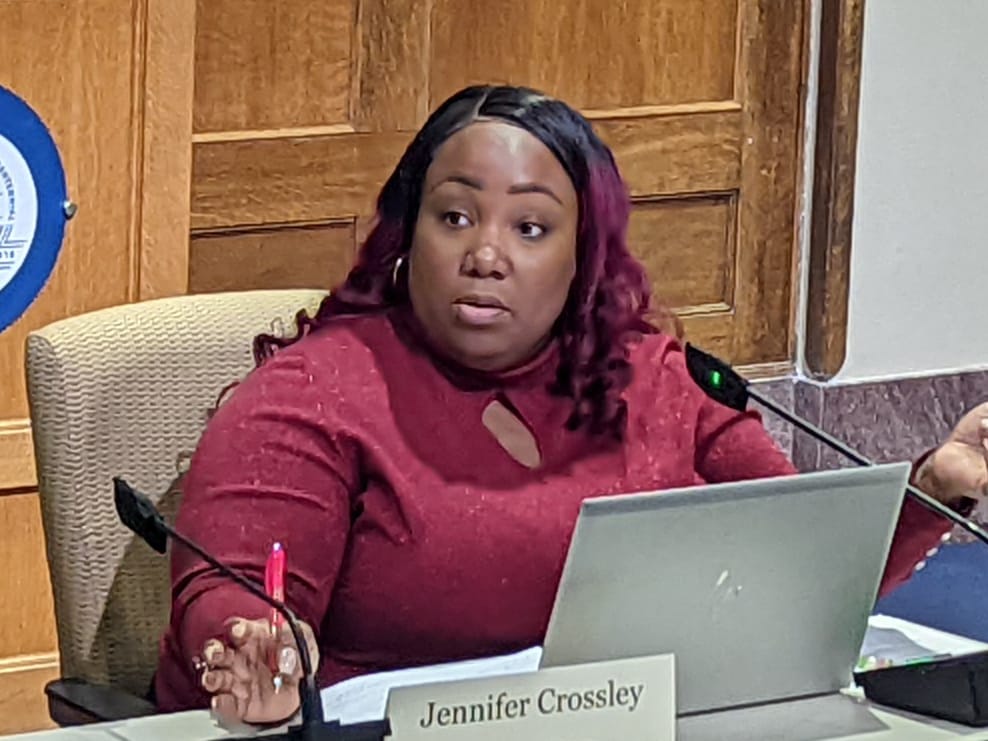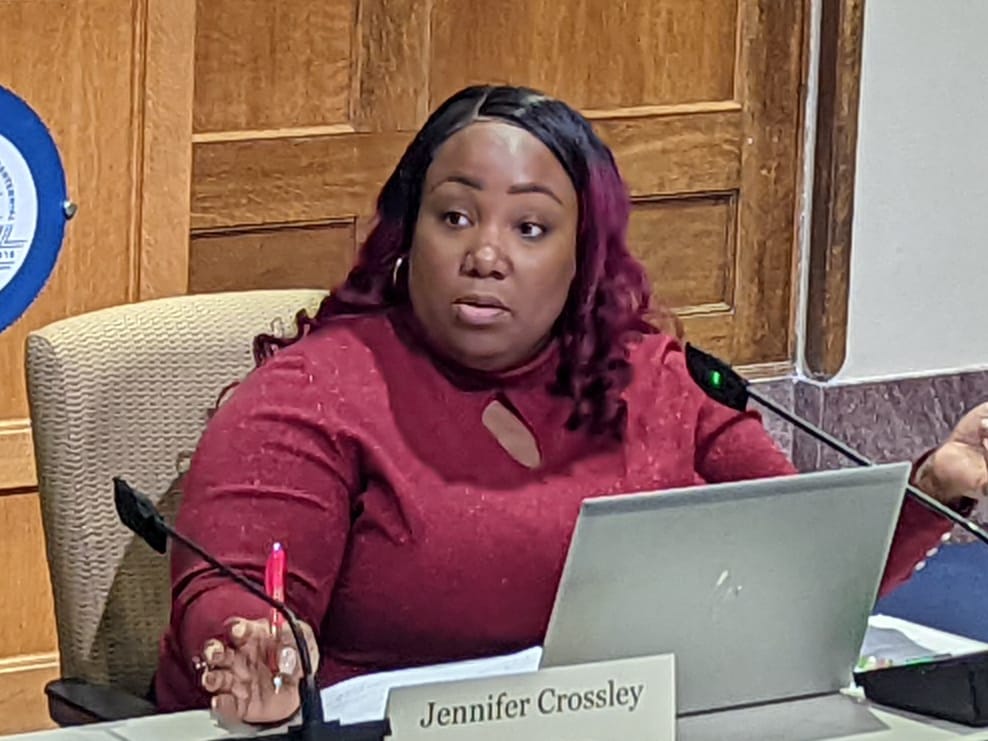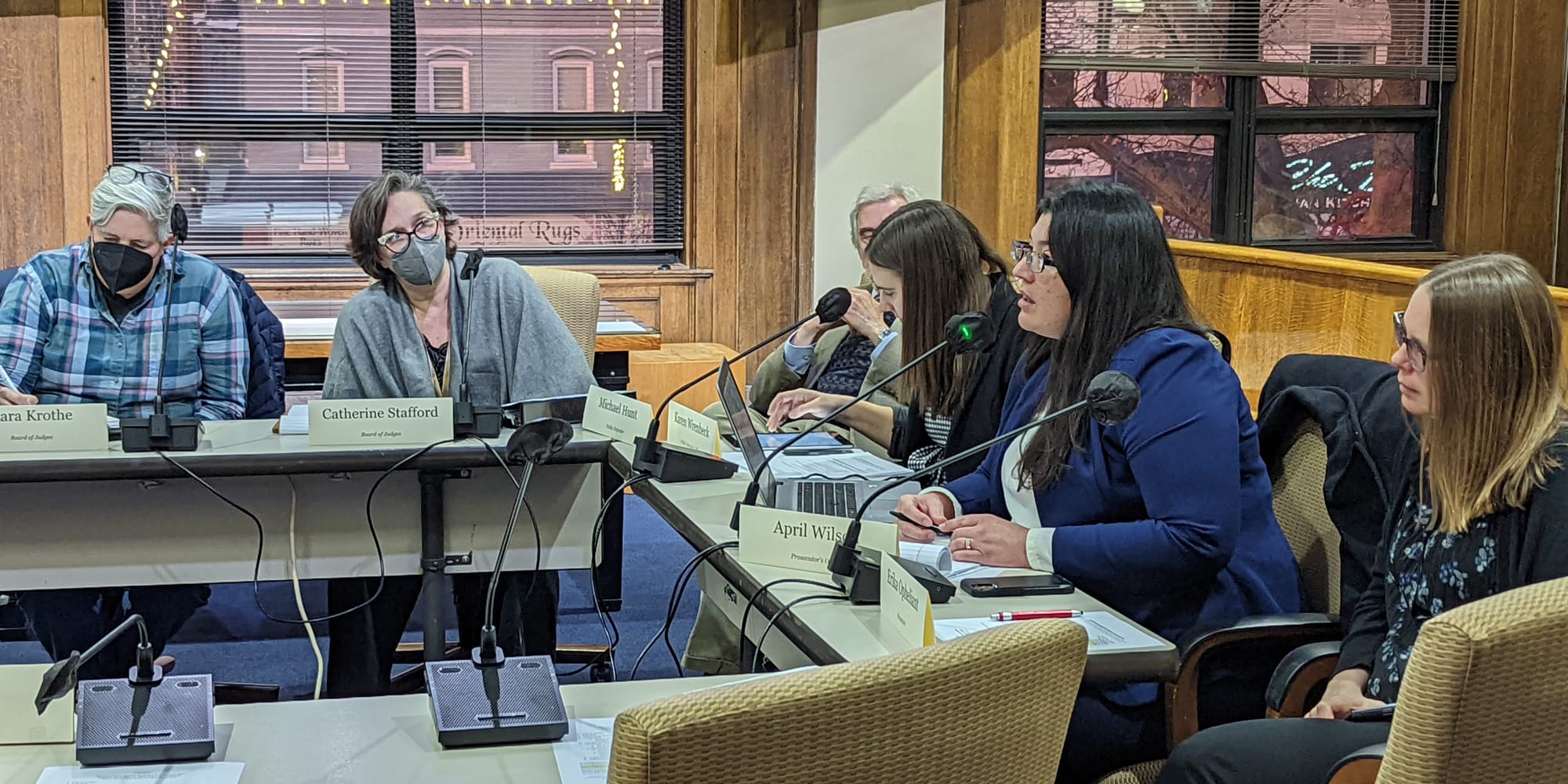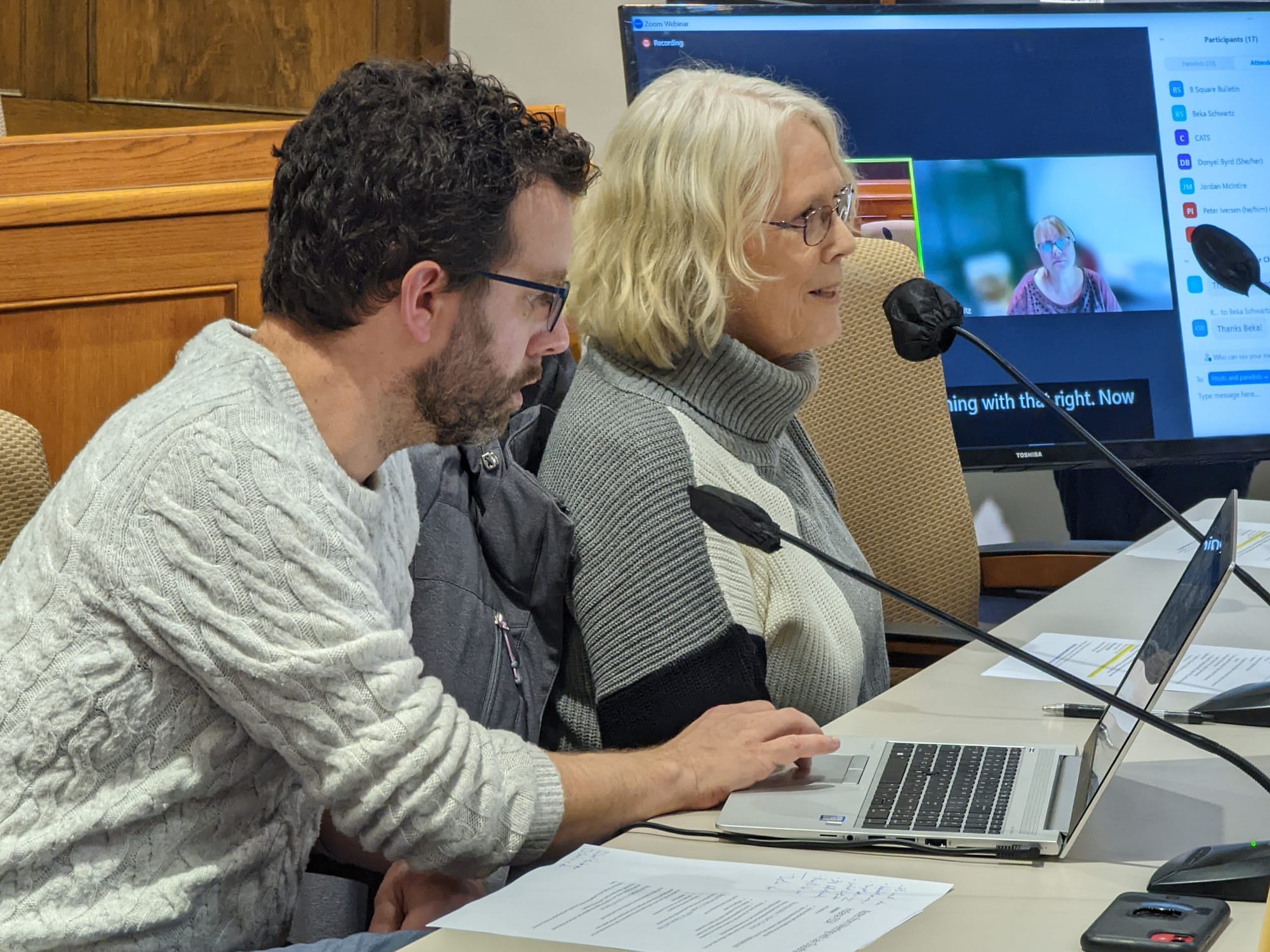Crossley breaks with other Monroe County officials on new jail choice




The site of a proposed new county jail was revealed at the end of July, when Monroe County commissioners gave approval of a $10-million real estate deal, for about 87 acres off Fullerton Pike in the southwest corner of Bloomington.
But Monday night’s meeting of Monroe County’s community justice reform committee (CJRC) seemed to dissipate a bit of the momentum for the decision to try to build a new jail at that location.
County councilor Jennifer Crossley stated: “I no longer feel comfortable with the Fullerton Pike property.”
In August, Crossley had joined the other six county councilors in voting to approve the terms and conditions for the purchase of the Fullerton Pike land. The deal required approval from county commissioners and county councilors.
Crossley’s statement on Monday is the second recent snag that the new jail proposal has hit.
In mid-November, Bloomington’s plan commission voted to send a rezone request for the Fullerton Pike property to the city council with a recommendation not to approve it. The purchase of the property is contingent on the rezone, because under the parcel’s current zoning, a jail can’t be built there.
The city council has not yet made a decision on the rezone request.
Crossley pointed to a consultant’s recommendation that was part of a report released about 18 months ago that says, “County officials should complete a study that compares the capital, maintenance, and operating costs of renovating the existing facility to new construction.” That kind of comparative study has not been undertaken.
The same report gives a “provisional estimated cost” of more than $56 million to rehab the existing jail facility.
Whether it’s new construction or renovation to the existing facility, some action would be needed to rectify the problems that caused the consultant to conclude about Monroe County’s jail building, which also houses the courts: “The jail facility is failing and cannot ensure consistent and sustainable provision of Constitutional rights of incarcerated persons.” The joint facility is named the Charlotte Zietlow Justice Center.
Crossley’s statement about not supporting the Fullerton Pike location came after the presentation of some results of a survey, which was meant to gauge the reaction to the current plan. The current plan is to build a jail and possibly one or two satellite courtrooms at Fullerton Pike, but to leave all other courts and offices at their current downtown locations for five to 10 years.
Those responding to the survey were staff in the county prosecutor’s office, the public defender’s office, and members of the Monroe County Bar Association. The survey received responses from 67 people.
The survey, which was handled by deputy public defender Karen Wrenbeck and deputy prosecutor April Wilson, showed little support for the basic approach that would split the jail from most of the county’s courtrooms and offices for at least a half decade.
One respondent wrote in the open-ended portion of the survey:
That is the absolute worst idea I’ve ever heard. There is no possible way for me to do my job properly if some courts and jail are a 20 minute drive away. This will slow down court proceedings and the judicial process even more. The judges will be furious. Clients will be furious. Attorneys will be furious. Every day.
Given the survey results, Crossley said the proposal made her feel like she was telling experts how to do their job. She said she felt like the county is “rushing into something. “This is a really challenging moment for us right now, where we can set ourselves up to succeed or set ourselves up to fail,” Crossley said.
Crossley said, “I think this almost feels like a train wreck that we can’t stop watching that we’re watching.”
The survey results made Crossley think the group needs to “take a pause for a minute to figure out what the heck it is that we’re about to do.”
Crossley said the detailed comparative cost study of renovation versus new construction, which is called for in the RJS Justice Services report that was released 18 months ago, is something that “we need to push ourselves to look at, for the sake of transparency, and what community members have been asking for.”
Responding on Monday to Crossley was county commissioner Lee Jones, who co-chairs the CJRC with county councilor Peter Iversen. ”The feeling up to now has been that we know that building—and I’m not talking about the jail, in particular, I’m talking about the entire building—has big problems,” Jones said.
The kind of comparative study that Crossley supports is “going to cost quite a bit,” Jones said. An evaluation had been done, Jones said, alluding to the “provisional estimated cost” in the RJS report of more than $56 million to rehab the existing jail facility. The provisional estimate, Jones said, was “admittedly not at that level” of detail called for in the recommendation.
Addressing the committee during public commentary at Monday’s meeting, was Sydney Foreman, who is part of a group called “Care not Cages.” Foreman echoed the sentiments that Crossley had expressed. She said there had been no followthrough on what she called “the most obvious and promising recommendation” in the RJS report, which was to estimate the cost of renovating the existing facility.
The purchase of the Fullerton Pike property is contingent on a rezone of the land from mixed-use employment (ME) to mixed-use institutional (MI). That rezone request, with a recommendation from the plan commission not to approve it, will get a first reading in front of the city council this Wednesday (Dec. 14).
Under local law, the council does not allow itself to debate ordinances at first reading. The customary interpretation of that law extends to a prohibition of public comment on ordinances that are introduced at first reading.
At Monday’s CJRC meeting, deputy prosecutor April Wilson pointed to some land the county already owns, off Rogers Street. That land is already zoned to allow a jail as conditional use, Wilson said.
In addition, Wilson said, the Rogers Street property is closer to central Bloomington than the Fullerton Pike location, and has better vehicular transportation access, as well as better walking access, Wilson said.
The Rogers Street property is just south of pharmaceutical manufacturer Catalent’s facility. Monroe County has, for a period of two years, set aside the Rogers Street property for possible future sale to Catalent, in case the company wants to expand. In March of this year city of Bloomington granted a tax abatement that would apply to any expanded facilities.
When news broke in late November about 400 layoffs at Catalent, president of the board of county commissioners, Julie Thomas, said if Catalent does not purchase the Rogers Street for expansion, that does not mean it’s suitable for a new jail.
The surrounding development of the property over the last two decades has made it unsuitable for a jail use, Thomas said. For one thing, there has been additional nearby housing development, she said.
In any case, Monroe County government has some plans for a significant affordable housing project on the Rogers Street site, Thomas said.
[Slide deck of survey presented during the Dec. 12, 2022 CJRC meeting]




Comments ()